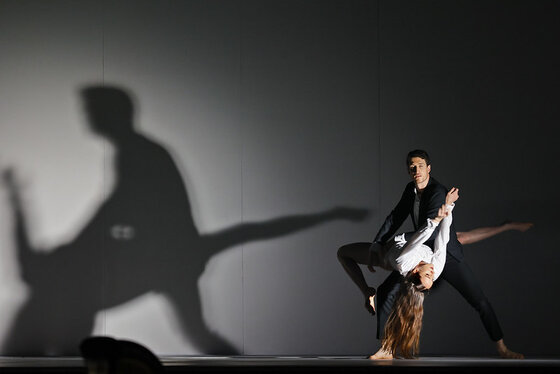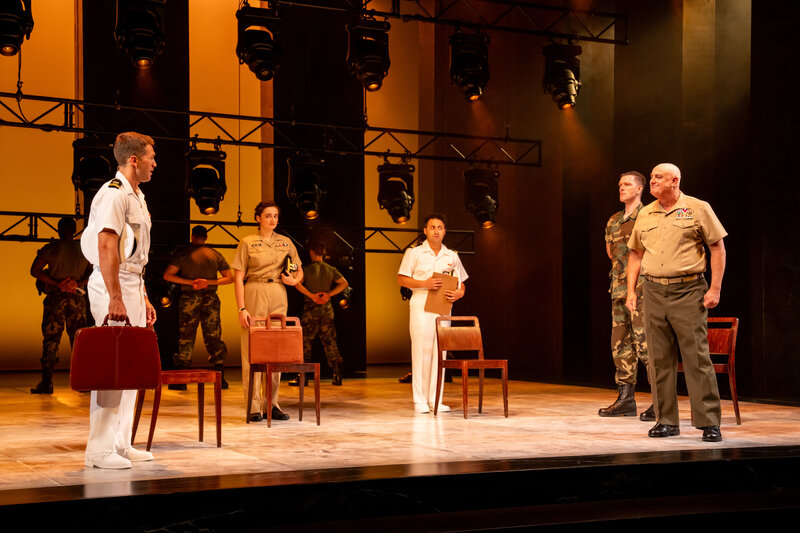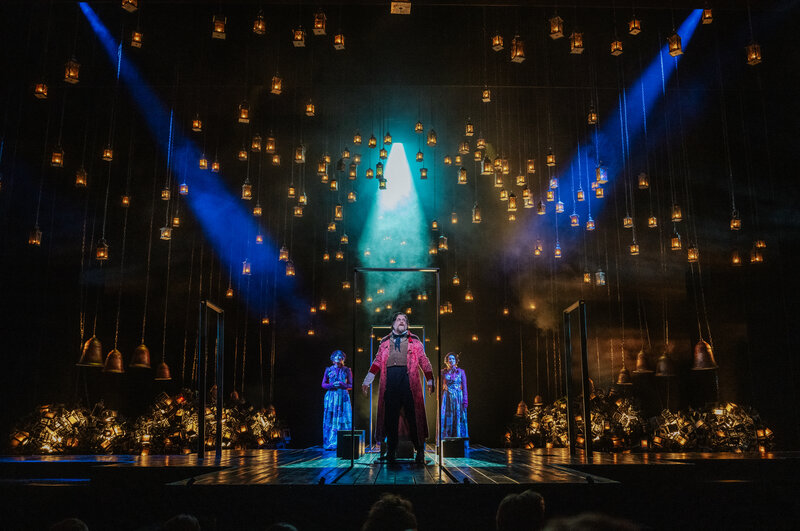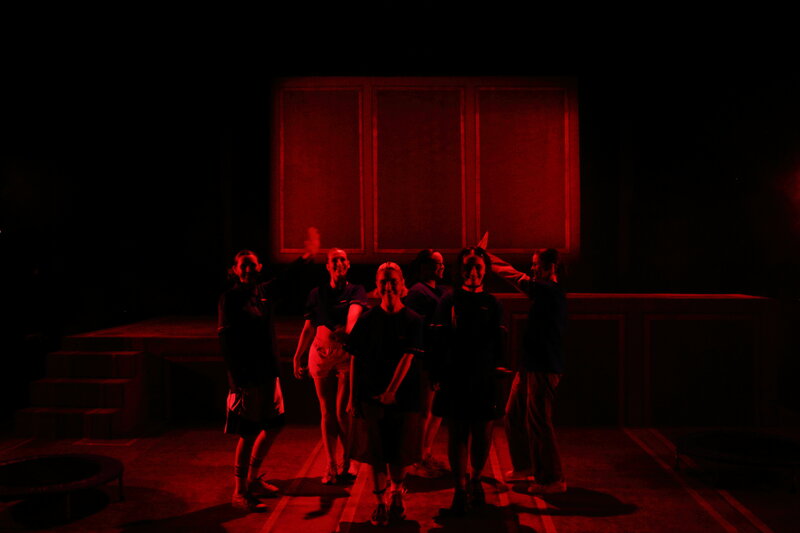Chances are actor Jeremy Sims is a familiar face to audiences through his television work, particularly the raunchy 1990s series Chances. But Sims is also a writer and director, who made his feature film directorial debut in 2006 with the powerful Last Train to Freo, depicting a rather tense train ride. Last Cab to Darwin is his third film as director.
Last Cab To Darwin tells the story of a taxi driver from Broken Hill diagnosed with terminal stomach cancer, who in 1996 drove all the way to Darwin to try and take advantage of the new euthanasia laws being enacted in the Northern Territory. Sims and his regular collaborator playwright Reg Cribb came across the story and thought it was a beautiful framework for an allegory or a beautiful story about a man driving to his death and maybe discovering stuff about himself while he did it.

“It’s inspired by the story that we read,” Sims elaborates on the origins of the film. “The setup of it is very similar. All the characters you meet in the film are ones that Reg and I have invented and made up. But the actual story is based on Max Bell, who in fact didn’t get to be the first. They were still messing around with the laws there in the Northern Territory when he got there. He ended up dying in Broken Hill. A guy named Bob Dent ended up being the first person to use the legal euthanasia laws.”
Sims and Cribb developed the story as a stage play first, and it was something of a great unwieldy beast that had songs and dancing and silliness, and it was three hours long. When it came to adapting the play for the screen, they realised that a number of changes were required to make it more cinematic. “We picked the central story out of it and we reimagined it for the film,” Sims explains. “We were very determined to make a piece of cinema rather than just adapt a play for the screen. So sometimes you see things that are very closely related to the play that they are based on, but this one is a big change.
“Reg and I have done a bunch before, especially with my first film called Last Train to Freo. That was very much a case of filming the play. We did end up adapting it to the screen, but about 85% of that was still a piece of theatre. That was a great exercise for us to go through at the beginning of our film careers, but we’ve since gone on and done other things. Reg has written Bran Nue Dae, and I directed Beneath Hill 60, which were bigger budget features.”
Sims and his crew shot the film in Broken Hill, which has provided the evocative backdrop for a number of classic Australian films, from Wake in Fright to Mad Max and Priscilla Queen of the Desert. “It’s a fantastic place to shoot,” Sims enthuses, “and the people of Broken Hill are rightly proud of their film heritage and they’re very encouraging of people who come and shoot there. And as opposed to other films that just used it as a location to be somewhere else, we actually wanted to make a film about Broken Hill. Because the town itself is a metaphor for the central character, the town itself has a great big wound in the middle of it, a great big mine that’s not got anything left in it. That was always a great metaphor for the character of Rex, who’s got a wound inside of him that needs to be healed as well.”
 “I tend to work with my friends, with people who know me and know how I operate, and we had some really experienced people on this shoot.” Sims and his crew spent seven weeks in Broken Hill, and the outback is very much a character in the film. Last Cab To Darwin has been beautifully shot by cinematographer Steve Arnold who has given it a burnished look reminiscent of some of the classic auteur films from the 70s. Sims referenced films like Dog Day Afternoon, Klute, Nashville, and Apocalypse Now and even some of the early Scorsese films. “It was that period in Hollywood when the studios let actors tell stories in movies, and it kind of ended when Star Wars and Jaws heralded the return of the blockbuster and that period was over,” he elaborates.
“I tend to work with my friends, with people who know me and know how I operate, and we had some really experienced people on this shoot.” Sims and his crew spent seven weeks in Broken Hill, and the outback is very much a character in the film. Last Cab To Darwin has been beautifully shot by cinematographer Steve Arnold who has given it a burnished look reminiscent of some of the classic auteur films from the 70s. Sims referenced films like Dog Day Afternoon, Klute, Nashville, and Apocalypse Now and even some of the early Scorsese films. “It was that period in Hollywood when the studios let actors tell stories in movies, and it kind of ended when Star Wars and Jaws heralded the return of the blockbuster and that period was over,” he elaborates.
Integral to the success of the film was the performance of Michael Caton as Rex McCrae, the central character. Caton is best known to audiences as the lovable larrikin Daryl Kerrigan from the classic film The Castle, but his work also includes roles in beloved television series such as The Sullivans and Packed to the Rafters. Sims was keen to show audiences another side of Caton’s talents. “He’s an Australian icon, and he also brings all of that kind of weight to it,” he enthuses. “He’s just technically a brilliant screen actor, and there aren’t that many people in Australia with as much experience as him. We quickly discovered when we were shooting how adept and detailed and accurate his work behind the camera is. He shot every scene, and he was on set from dawn to dusk every day of the shoot and he never wavered. He was determined to make this performance something special towards the end of his career, and I hope it has that effect for him.”
Mark Coles Smith (Airlock, Pawno) brings an irrepressible sense of energy and mischief to his performance as Tilly, a young Aboriginal man Rex picks up along the way. Sims directed him in Beneath Hill 60, where he played a young aboriginal soldier who gets killed early on. Initially reluctant to cast him here, Sims was impressed at the lengths Smith went to in preparation for the role.
Another key role in the film is that of the doctor in Darwin who is keen to introduce euthanasia. She is played by Jacki Weaver, who appeared in the original stage play where she played about fifteen different roles – everything from town mayors to Swedish backpackers. “She is charming and funny and a dear friend,” says Sims. “We wrote that doctor role for her. It’s a tough role, it’s a thankless role. But she was really brave because she didn’t try to sugar coat it, she didn’t come in and say I want to be liked, she wanted to show the tough side of an obsessional character who might have forgotten their calling.”
The film deals with the controversial and deeply personal issue of euthanasia, but Sims and Cribb wanted to avoid becoming too preachy on the subject. “It wasn’t our aim to tell anyone what they should think on the subject,” he elaborates. “Our aim was to open the subject up for conversation. People are finding that it is funny and provocative. They feel like at the end they can talk about this sort of stuff without it being taboo or people getting too angry about their point of view. But it’s something we have to talk about because everyone, believe it or not, is going to die, and we need to work out how we are going to deal with it here.
“Reg and I have always managed to find amusement in the darkest of places, so people are very surprised to find that they laugh the whole way through the film. That’s something we’re very proud of, that we managed to make it moving and funny at the same time.”

The other central theme deals with the prickly issue of race relations in contemporary Australia. Sims admits that most of the work he and Cribb have written has involved indigenous issues to some degree. “We really strongly believe that we haven’t made the most out of the meeting of the oldest living culture in the world and the youngest culture in the world being together on the one continent. Our white society hasn’t made the most of learning what we can get from the aboriginal society, and the aboriginal society hasn’t learned yet how best to adapt to the white paradigm that’s taken over. We like to embrace those issues and we like to look at contemporary issues with that. And certainly the image of an Aboriginal woman sitting on a couch and holding hands with an older white man was an image that we were certainly headed towards in the whole process of writing the script.”
And Last Cab to Darwin has hit cinemas at a time when the race debate has been reignited and heated up with the issue of AFL football champion Adam Goodes being continually booed. When asked about the fuss surrounding the issue, Sims is pretty candid and forthright. “I feel like everyone who has an opinion on that should go and see this film and watch Tilly and see how important football is in indigenous culture and see how important pride is. What Australians are doing to the Adam Goodes issue at the moment, and to the Aboriginal sense of self, is just shocking. It’s set back race relations in this country about twenty years or so.”
Last Cab to Darwin is the third film that Sims has directed, and he admits that this is a direction he has always wanted to pursue in his career. “I’ve always been a bossy bloke,” he says with a laugh. “I love acting, but I’ve spent half my time when acting thinking about how that production could be done better, so it’s been a natural progression for me. I’ve directed a lot of theatre, and I’m really enjoying making films because they’re big and complicated projects. I tend to produce as well as write, and that is like the ultimate thing for me, where you see a project right through from the very beginning to the very end.”
Last Cab to Darwin had its Australian premiere screening at the Sydney Film Festival in June, and Sims is pleased with the response, which has been very positive. The film is about to be released nationally on 215 screens, which is massive for an Australian film. “The reason that’s happening is that every time we screen it people feel like it connects with them,” Sims says.
“People go and see Australian films in their hordes when they’re good and they have a reason to go and see them. What people don’t seem to get, and I’m not sure why, is that nearly all of the films that get made here get released, whereas the few films we get to see from overseas are the ones that get through three or four levels of choosing from film festivals overseas. We don’t get to see 90% of all the films that get made in France or Spain or Belgium or Holland, so we have this weird sense that our films are worse than other peoples, but that’s simply not true. The best Australian films are as good if not better than films from overseas. It’s just a question of perspective really.”
Last Cab to Darwin opens nationally on 6 August 2015.
Greg King

David Edwards is the former editor of The Blurb and a contributor on film and television




